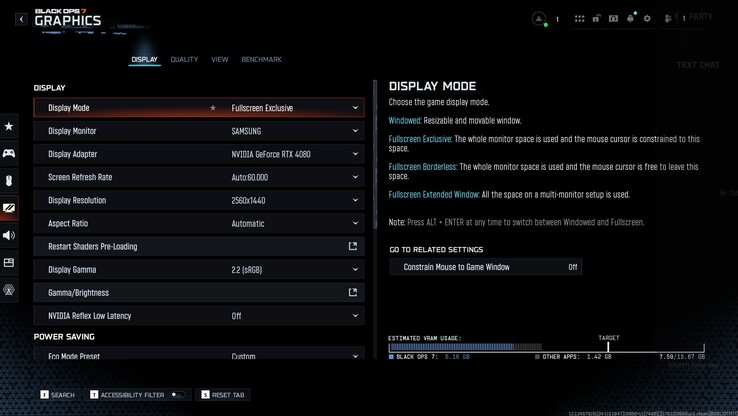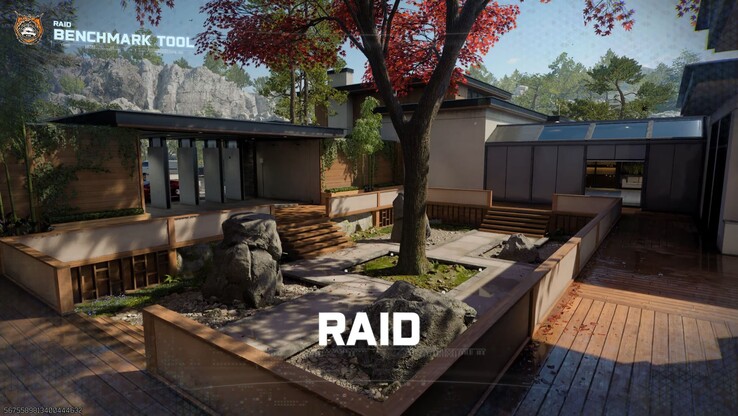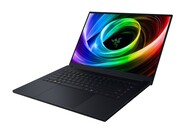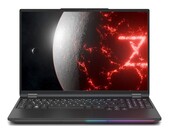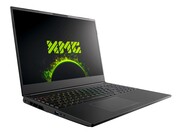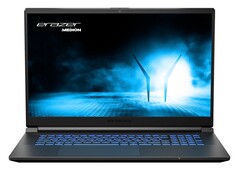
Call of Duty Black Ops 7 Review: A question of getting the settings right
Controversial first-person shooter.
Even though the graphics in Black Ops 7 falls short of expectations, the engine used can be very demanding, particularly when ray tracing is activated. We carried out various performance tests including using upscaling and frame generation to see how well various laptop and desktop GPUs handle Activision's latest FPS.Florian Glaser, 👁 Florian Glaser, ✓ Vaidyanathan Subramaniam (translated by DeepL / Ninh Duy) Published 🇩🇪
Verdict: Pleasingly performant without ray tracing
Few PC games in recent times have shown such a stark contrast between press and player ratings. While magazines rate Call of Duty: Black Ops 7 positively overall, the title fares much worse on platforms such as Steam and Metacritic, sparking heated discussions in forums and comment sections.
The technical verdict is similarly mixed. On the one hand, the first-person shooter's graphics are quite respectable, but the underlying technical framework is not (or no longer) state-of-the-art.
Meanwhile, hardware requirements vary greatly depending on the settings selected. As long as you don't use ray tracing, Black Ops 7 runs decently to surprisingly well even on older or weaker systems. However, once tracing is activated, even modern high-end PCs can hit their limits, particularly in higher resolutions.
Technology, Settings, and Benchmark
Graphically, little has changed compared to Call of Duty: Black Ops 6 from 2024. As with the predecessor, we would rate the visuals in Black Ops 7 as relatively good but not outstanding. We liked the character models best — they are respectably animated, especially in the cutscenes, and are pleasingly similar to their real-life counterparts.
However, there is once again criticism for the underwhelming user experience, which is mainly due to the mechanics and structure of the underlying Call of Duty HQ launcher.
Similar to the last installment in the series, you are confronted with regular annoying or unnecessary waiting times (for example during certain menu changes, login process, and shader preload) along with occasional problems like disconnections and crude error messages.
On top of that, there's the hefty game size (~100 GB download, ~200 GB space requirement on the storage drive).
Meanwhile, PC gamers can look forward to a very comprehensive (almost too extensive in our eyes) options menu, which at times requires a lot of clicking despite being divided into several tabs.
The display menu lets you tweak the screen and various power saving settings, while the quality menu not only offers several presets but also an enormous number of individual settings, some of which, like ray tracing, have a major impact on performance.
As usual, upscaling helps with performance problems. The shooter supports all modern variants such as Intel XeSS, AMD FSR, and Nvidia DLSS. The developers also deserve praise for providing clear explanations of each setting, including the impact on CPU, GPU, and VRAM.
Like most current games, Call of Duty: Black Ops 7 is quite VRAM-hungry without reaching the level of some Unreal Engine 5 games (see Borderlands 4). For instance, maximum settings at QHD resolution require around 8 GB of VRAM. The best part is that setting changes are applied directly without a restart.
For performance measurements, we use the integrated benchmark, which is again inexplicably only available in the multiplayer mode.
The developers have designed a fresh sequence for Black Ops 7 that — much like in Black Ops 6 — includes camera movements and an extended first-person segment with numerous firefights and explosions.
Some information such as the frame rate is displayed during the one-minute benchmark. At the end of the measurement, a detailed evaluation appears, which is divided into several sections (see screenshots).
Call of Duty: Black Ops 7 benchmark results
FHD / 1,920 x 1,080
If you play without ray tracing, the hardware demands remain fairly moderate. More powerful iGPUs like the Radeon 890M crack the 60 fps mark in Full HD at medium details. The Ultra preset is also still playable with minor compromises.
The requirements climb significantly higher once ray tracing is enabled. At a 1,920 x 1,080 resolution and the Extreme preset (whose performance is otherwise very much similar to Ultra settings), mid-range chips already struggle at the level of the GeForce RTX 4060 Laptop.
Only an RTX 5080 Laptop can reliably reach 60 fps with ray tracing, although in theory even an RTX 5070 Ti Laptop is sufficient.
| Call of Duty Black Ops 7 | |
| 1920x1080 Minimum Preset 1920x1080 Balanced Preset 1920x1080 Ultra Preset 1920x1080 Extreme Preset + Raytracing | |
| NVIDIA GeForce RTX 4080, i9-13900K | |
| NVIDIA GeForce RTX 5090 Laptop, Ryzen AI 9 HX 370 | |
| NVIDIA GeForce RTX 5080 Laptop, Ultra 9 275HX | |
| NVIDIA GeForce RTX 5070 Ti Laptop, Ultra 9 275HX | |
| NVIDIA GeForce RTX 4060 Laptop GPU, R9 7940HS | |
| NVIDIA GeForce RTX 3060 Laptop GPU, i7-12700H | |
| AMD Radeon 890M, Ryzen AI 9 HX 370 | |
QHD / 2,560 x 1,440 (+upscaling)
At a QHD resolution, we would recommend an RTX 5080 Laptop and upwards for maximum details and ray tracing without upscaling.
However, achieving 60 fps still requires some upscaling help. In our case, we used the Balanced preset in DLSS Transformer mode during testing.
| Call of Duty Black Ops 7 | |
| 2560x1440 Extreme Preset + Raytracing 2560x1440 Extreme Preset + Raytracing + DLSS Balanced | |
| NVIDIA GeForce RTX 4080, i9-13900K | |
| NVIDIA GeForce RTX 5090 Laptop, Ryzen AI 9 HX 370 | |
| NVIDIA GeForce RTX 5080 Laptop, Ultra 9 275HX | |
| NVIDIA GeForce RTX 5070 Ti Laptop, Ultra 9 275HX | |
| NVIDIA GeForce RTX 4060 Laptop GPU, R9 7940HS | |
| NVIDIA GeForce RTX 3060 Laptop GPU, i7-12700H | |
UHD / 3,840 x 2,160 (+upscaling)
Running Black Ops 7 at 3,840 x 2,160 pixels in the Extreme preset, with ray tracing, and without upscaling overtaxes all currently available laptop GPUs and even high-end desktop cards like the GeForce RTX 4080.
In this case, you'll almost inevitably have to rely on DLSS and other upscaling technologies or simply do without ray tracing at all.
| Call of Duty Black Ops 7 | |
| 3840x2160 Extreme Preset + Raytracing 3840x2160 Extreme Preset + Raytracing + DLSS Balanced | |
| NVIDIA GeForce RTX 4080, i9-13900K | |
| NVIDIA GeForce RTX 5090 Laptop, Ryzen AI 9 HX 370 | |
| NVIDIA GeForce RTX 5080 Laptop, Ultra 9 275HX | |
(Multi) Frame Generation
Finally, you will also see a few benchmarks with frame generation activated. As with most titles, the subjective visual impression does not necessarily correspond 1:1 with the determined fps values.
As expected, MFG 2x provides a decent performance boost. With MFG 4x, an RTX 5090 laptop can even exceed 100 fps in 4K at maximum settings and with DLSS enabled.
| 3.840 x 2,160, Extreme Preset + Raytracing High | DLSS Balanced Transformer | DLSS Balanced Transformer + MFG 2x | DLSS Balanced Transformer + MFG 4x |
| GeForce RTX 5090 Laptop | 39 fps | 61 fps | 117 fps |
| GeForce RTX 5080 Laptop | 32 fps | 54 fps | 98 fps |
Test systems
Call of Duty: Black Ops 7 performance overview
Because gaming benchmarks are very time-consuming and can be sometimes delayed due to activation restrictions, we can only present a limited number of results when the articles are published. Additional GPU results will follow later.











